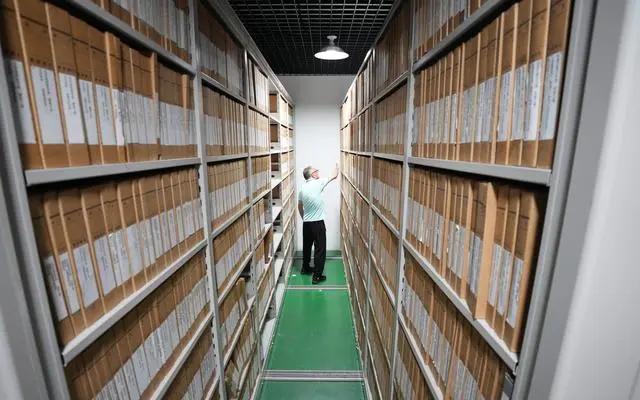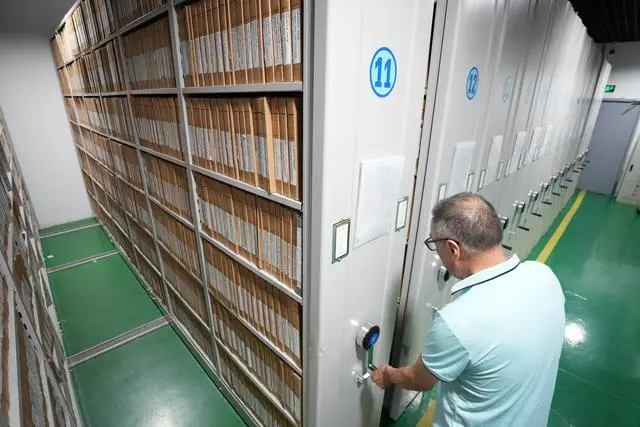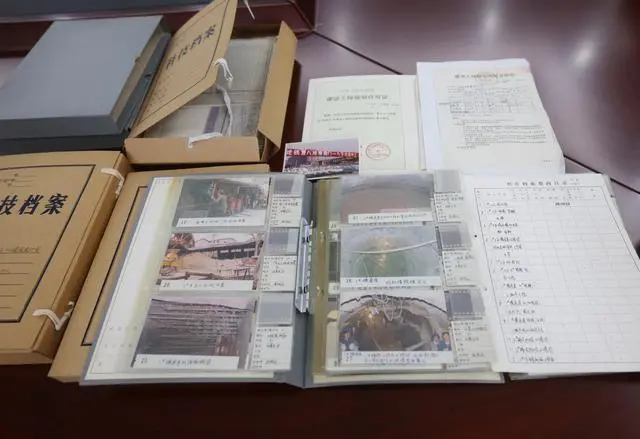
Reservation booth:+86(0)21-3114 8748
Visit/media contact:+8613601815988
QQ:2463282767
email:artsexpo@sgexpo.cn
Rail Transit Exhibition News Today's Beijing, the subway has been deeply "bound" with the city life, almost every trunk road has a corresponding subway line below, in emerging areas, the city is also along the track and station to spread out, building a "station-city integration" life.
After the construction of each subway is completed and put into operation, the information in the process of planning and project approval, design and construction will be summarized and sorted out in the form of "engineering files", which will provide an important reference for the future rail transit construction management.
On the occasion of International Archives Day on June 9, a reporter from the Beijing News visited the "subway engineering archives" of BIIC, which stores more than 130,000 volumes of paper subway engineering archives. In 2024, Beijing Investment and Production Co., Ltd. will launch a pilot project for the digital processing of stock engineering archives, of which about 15 million pages will be scanned for documents and about 1.35 million pages for drawings. With the digitization of archives, the borrowing process will also be optimized, from about 7 working days to a few hours.

The two warehouses store more than 130,000 volumes of subway engineering files
By the end of 2023, Beijing has a total operating mileage of 836 kilometers and 490 stations, including 83 transfer stations. In 2023, the passenger volume of Beijing's urban rail transit will reach 3.454 billion, with an average of 9.4623 million passengers per day and an average daily passenger volume of 10.7964 million on weekdays.
In the face of such a huge volume of urban rail transit, the scale of its engineering files is also "massive". Beijing Rail Transit Engineering Archives (hereinafter referred to as "Engineering Files") is an important data carrier of rail transit, which is not only a detailed record of the construction, operation and maintenance of engineering projects, but also an important guarantee for project quality, safety and compliance.
The reporter learned that up to now, there are more than 130,000 volumes of engineering files managed by Beijing Investment and Production Company, which are stored in Suzhou Hutong warehouse and Daxing warehouse, of which Suzhou Hutong warehouse stores more than 20,000 volumes of infrastructure documents for 20 lines such as Line 4, Line 5, Line 6 and Line 7; The Daxing warehouse stores more than 110,000 volumes of project files such as infrastructure, construction, supervision, and as-built drawings of 25 lines such as Line 4, Line 5, Line 6, and Changping Line, all of which are kept and stored in the form of paper files.
These project archives include project decision-making documents, commencement documents, construction records, project completion data, difficulties and solutions in the process of rail transit construction.
"There are many unique records in the archives, which are also the key elements of the success of the project, reflecting the wisdom and sweat of the participants, and there are many precious archives that have witnessed the development of Beijing's rail transit and even urban construction, which have extremely high collection value and reference value." Han Song, manager of the engineering construction department of Beijing Investment and Industry Company, told reporters that although the subway line has been opened, the project file still has important value, whether it is the construction of a new line, the transformation of the existing line, or the construction that may be associated with the subway, in the process of planning and construction, it is necessary to borrow archives and query information.

The archives of the subway project can be traced back to the construction of the "complex eighth line".
On June 5, the reporter came to the subway engineering archives warehouse in Daxing District. Here, files are neatly stacked like books in movable filing cabinets, and the most visited visitors here are the workers of the builders and operators of the subway.

The reporter learned that Beijing's subway engineering archives can be traced back to the construction of the complex eighth line in the 80s of the last century. When it comes to the name "Complex Eighth Line", many citizens may be unfamiliar. In fact, the Beijing Metro "Fu 8 Line" is the east section of Beijing Metro Line 1, the line starts from Fuxingmen Station in the west, and reaches Sihui East Station (formerly known as Bawangfen Station) in the east, with a total length of 13.59 kilometers and a total of 11 stations, up to now, the "Fu 8 Line" has been in operation for 24 years.
These archives record the whole process of early rail transit engineering construction in detail, covering the ideology, technology, material selection, construction methods, etc. of engineering construction, reflecting the engineering characteristics and scientific and technological level of a specific historical period. Although many early engineering technologies and materials are no longer in use, these early engineering archives are an important basis for contemporary builders to understand the development of rail transit engineering and explore the process of technological evolution.
In order to manage the project archives more systematically and give full play to the important role of the project archives in the investment, construction and operation of rail transit, Beijing Investment and Industry Co., Ltd. and various units in the industry have fully researched and initially established an institutional system suitable for the collection, management, storage and use of engineering files. The archival staff shall carry out the annual acceptance, borrowing and utilization of engineering archives in accordance with the corresponding system.
In 2023, the archival staff will accept a total of 11,369 boxes of 20 line files, and the annual file acceptance completion rate will be 100%; Provide 160 people for file borrowing and utilization, which is equivalent to 1 person every two days, involving 6,947 pages of archives, providing judgment basis and information support for the whole chain of rail transit such as planning and design, construction management, operation management, asset management, land development, and four-network integration.
This year, the pilot project of digital processing of existing rail transit engineering archives will be launched
With the wide application of the new generation of information technology, the working environment, objects and contents of archives have undergone tremendous changes, and it is urgent to innovate the concepts, methods and models of archives work, and accelerate comprehensive digital transformation and intelligent upgrading.
Han Song told reporters that in order to solve the problems of large amount of paper file retrieval, easy to lose and damaged, low utilization efficiency, and aging paper, Beijing Investment and Production Company converted paper files into electronic data to realize the digital management of engineering files. "In fact, since 2021, the new subway line in Beijing has realized the synchronous storage of digital archives and paper archives, which is more convenient for later retrieval and reference."
In 2024, Beijing Investment and Production Company will start the pilot work of digital processing of stock engineering files, and on the basis of completing the pilot work, steadily promote the digitization of overall stock project files. The reporter noted that at present, the engineering files of some subway lines in Beijing have completed the establishment of digital archives, and the query information of relevant personnel can be retrieved in the special system.

Compared with paper archives, electronic archives effectively reduce management costs, reduce waste of resources, and are conducive to the protection of original archives; On the premise of ensuring information security, the retrieval efficiency is greatly improved and the errors of manual operation are reduced; Image processing technology can be used to repair and optimize image quality, making text and images more legible. In addition, the borrowing process has been greatly simplified, and the borrowing process, which used to take about 7 working days, will be reduced to a few hours.
In order to meet the needs of the informatization construction of engineering archives, BII is planning to build a rail transit digital archive center, with the goal of establishing a digital archive with complete sites, information infrastructure and systems. Including the new construction area of 5,760 square meters of archives center building, the completion of archives warehouse equipment integration, warehouse environmental monitoring system integration and other functions; Deploy the information equipment infrastructure of the archive system to support the construction and operation of the digital archive system; Deploy the engineering file system of the private network environment, provide the collation, inspection, handover and receiving, storage and utilization functions of the engineering files online, and the relevant modules of the digital file system have been put into trial operation one after another. After the completion of the digital archives center, it will effectively alleviate the problem of tight storage space for engineering archives and promote the comprehensive development of digital management of engineering archives.
In the next step, BII will also actively introduce technology to build an efficient, convenient and safe rail transit engineering file management system, realize the efficient use and safe transmission of archive information, and promote the informatization construction in the field of Beijing rail transit engineering archives.